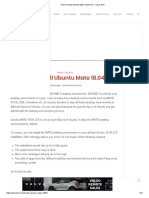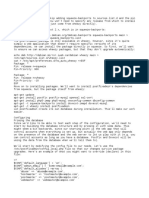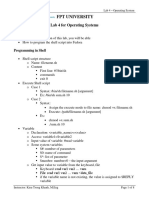0% found this document useful (0 votes)
17 views17 pagesModule 2 Os
The document provides an overview of process management in operating systems, detailing the concept of processes, their states, and the structure of process control blocks (PCBs). It discusses the roles of threads, process scheduling, context switching, and the mechanisms for process creation and termination. Additionally, it covers interprocess communication methods, including shared memory and message passing, along with examples like the producer-consumer problem.
Uploaded by
zayiofficial725Copyright
© © All Rights Reserved
We take content rights seriously. If you suspect this is your content, claim it here.
Available Formats
Download as PDF, TXT or read online on Scribd
0% found this document useful (0 votes)
17 views17 pagesModule 2 Os
The document provides an overview of process management in operating systems, detailing the concept of processes, their states, and the structure of process control blocks (PCBs). It discusses the roles of threads, process scheduling, context switching, and the mechanisms for process creation and termination. Additionally, it covers interprocess communication methods, including shared memory and message passing, along with examples like the producer-consumer problem.
Uploaded by
zayiofficial725Copyright
© © All Rights Reserved
We take content rights seriously. If you suspect this is your content, claim it here.
Available Formats
Download as PDF, TXT or read online on Scribd
/ 17























































































